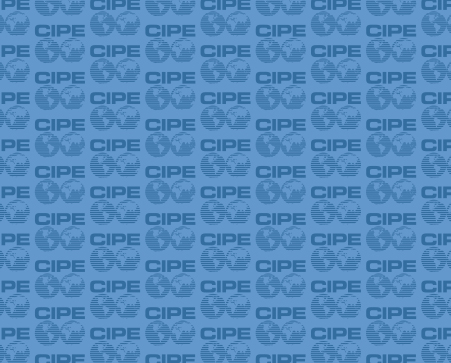
Successful implementation of the post-2015 development agenda requires some important behavior changes and a commitment to “do development differently” by the various stakeholders pledging to reach this ambitious set of goals. What does that involve exactly?
In this month’s Economic Reform Feature Service article, James Michel, a renowned expert in international development cooperation and a senior adviser to CSIS, discusses the ambitious post-2015 Sustainable Development Goals (SDGs). The article is a continuation of Michel’s earlier work on shaping the new development agenda and it is based on a research paper recently published by the Center for Strategic and International Studies (CSIS).
One setback of past global development efforts that Michel outlines has been “the persistent tendency to view development through the lens of aid relationships.”
“The new agenda,” Michel explains, “will need to promote inclusive, result-oriented partnerships that support local leadership, capabilities, and responsibility.” This means looking beyond traditional aid structures to partnerships with governments, multilateral development organizations, and non-state actors seeking to effect sustainable change. He notes that, “A principal challenge will be to make strength of diversity and achieve optimum convergence of these different views and efforts in furtherance of sustainable results.”
Welcomed to the table during initial deliberations and now implementation of the SDGs are “south-south” and triangular relationships emerging from rising powers including Brazil, Russia, India, China, and South Africa. Once primary aid recipients, these countries are now becoming actively engaged in development cooperation, often as donors. Also gaining a greater stake in driving inclusive and sustainable economic growth is the private sector.
Another key paradigm shift involves “the once dominant role of official development assistance (ODA)… largely overtaken by other kinds of international and domestic resources.” As Michel posits, “if financing for development is made up of international transfers exceeding $2 trillion (largely from private investment, commercial loans, and remittances) together with domestic public spending of more than $5 trillion (some part of which is attributable to international transfers) and trillions more in commercial domestic spending, why is so much attention still focused on the approximately $160 billion in ODA?” The July 2015 Addis Ababa Conference on Financing for Development and the Addis Ababa Action Agenda are merely the beginning of shaking up traditional thinking and inviting new ideas for the ways in which development is financed.
Michel reflects the growing opinion that ODA should not be the principal instrument of development cooperation. An openness to all available sources and types of financing, greater domestic resource mobilization, and increased efficiency and effectiveness of spending will lead to better development outcomes. “More than all other non-state actors,” Michel writes, “the private sector will drive the pursuit of inclusive and sustainable economic growth and job creation and the transition to sustainable patterns of production and consumption.”
To “do development differently” in the post-2015 agenda, the global community comprised of the public and private sectors and civil society must continue thinking sustainably. Sustainable growth means building resiliency. “Achieving the SDGs will be possible only with dramatic change in fragile and conflict-affected states,” writes Michel, adding that “by any measure, these countries have been left behind.” SDG 16 aims to “promote peaceful and inclusive societies for sustainable development, provide access to justice for all and build effective, accountable and inclusive institutions at all levels.”
In order to overcome fragility and proactively prepare for – rather than just respond to – potentially disruptive factors, greater attention must be placed on peacemaking and state-building within fragile and conflict-affected states.
The new development agenda is more expansive and ambitious than its predecessor, the Millennium Development Goals. Michel’s paper, which highlights a number of priorities, serves as a useful guide for achieving successful implementation.
Read the Feature Service article here.
The full paper can be accessed on the CSIS website: http://csis.org/publication/beyond-aid.
Stephanie Bandyk is a Program Assistant for Global Programs at CIPE.
Published Date: February 10, 2016
